Here it is.. Tibetan scenery from many different angles. After the Potala Palace we went to the Jokhang temple. This temple has a Buddha image that is revered all over Tibet and is very old. It is supposed to be from the time of the Buddha himself. It was brought to Tibet when Buddhism was introduced to Tibet. However, we don't have photos as photography is not allowed inside the temple.
There is a lovely large plaza in front of the temple which has 2 pillars flanking the entrance. The pillars are covered in prayer flags. You can see the temple tower in the left hand side of the photo.
The following day, we drove to Shigatse, which is the next largest city in Tibet. Shigatse is the home of the Panchen Lama. We drove there using a route over the mountains and returned by a route along the valley. You will see gorgeous views without much commentary from me.
One of the things I noticed was that every lamp post was decorated with the Chinese flag. Two on each post.
We started in the valley that Lhasa is in. We first cross the Lhasa river and then drive along the Brahmaputra, known to the Tibetans as Yarlung Tsampo. That is pronounced as if it is spelled Yellow Zambo, by the way.
Wild lavender colors the slopes blue. It was hard to capture the blue but this is really lavender blue.
We drove along the Yarlung Tsampo.
There are a lot of villages along the road. All of them look similar. This is classic Tibetan architecture with a lot of decorative elements in the houses. Then we turned away from the river and started climbing.
We've been climbing for a while. See the road. We are going to climb some more.
Do you see that small flat area in the center right of the photo? That is the level of the river. We started there. The red and white blocks are the guard rails.
Here you see how far we have come. I think this is around the first pass, not exactly the highest point but close. You can see now that we are at the same level as the mountains instead of looking up at them. This pass was around 5200 m high. We didn't spend more than 5-10 mins here so didn't feel too much worse than usual. I can't imagine hiking at this altitude without a lot more acclimatization.
And then we see Yamdrok Lake. This is one of the sacred lakes in the Tibetan religion. Tibetans do not eat fish or fowl. I've heard different reasons for this and I'll state all of them as I don't know which one is the real reason. Tibetans don't bury or burn their dead. They do something called sky burial. Sky burial means leaving the body out nature to take its course, including feeding birds of prey. So fowl and fish are part of how bodies are disposed and eating them is therefore forbidden. Sky burial makes sense in an area with few trees and frozen, rocky ground. The other reason I heard is that because Tibetans are Buddhists, they don't believe in taking life. However, to exist in this harsh climate, the body needs meat. Eating fish or fowl means taking a life to feed a person for one meal. Eating meat (yak or cattle or sheep) means that a life can feed many people for many meals. So it lessens the impact on other life.
Our guide also told us that Tibetans will buy the live fish that the Chinese sell for eating and release them into the nearest body of water. The Chinese then go and fish in that same body and put the fish back on the market. There is now a movement among the Tibetans to stop doing this buying and freeing as it is just putting money in the pockets of the Chinese.
Looking back at the road at the pass.
Now we go down...note the road
Yamdrok lake is l-o-n-g. We drove down to the lake level and then drove around it for a long time. The edge of the lake is rocky mud.
There are little rocky pyramids crowned with prayer flags on the shore. These are for good luck.
After a few minutes at the edge of the lake, we start driving along its perimeter.
One interesting feature of these village homes are piles of dried yak dung. Yak dung is the main fuel that is burned for heat in the winter. The dung is patted out onto the walls to dry and then the cakes are stacked on top of the wall or in free standing mounds. The more dried yak dung around a house, the richer its inhabitants. This is because they have more yaks from which to get dung. What you think is rocks in a rock wall are not rocks.
I finally was able to get a good shot of the sheep.
Our next stop was to see a glacier in the second pass.
There is a white stupa in front of the glacier and tons of prayer flags. Every part of the landscape is steeped in spirituality.
After driving more distance along the lake and crossing another pass, we finally roll into Gyantse. We stopped here for a visit to a monastery so I will also stop here as this is already a long and picture-heavy post.
My next post will have some fiber content - as the Tour de Fleece 2014 started yesterday.
There is a lovely large plaza in front of the temple which has 2 pillars flanking the entrance. The pillars are covered in prayer flags. You can see the temple tower in the left hand side of the photo.
The following day, we drove to Shigatse, which is the next largest city in Tibet. Shigatse is the home of the Panchen Lama. We drove there using a route over the mountains and returned by a route along the valley. You will see gorgeous views without much commentary from me.
One of the things I noticed was that every lamp post was decorated with the Chinese flag. Two on each post.
Wild lavender colors the slopes blue. It was hard to capture the blue but this is really lavender blue.
There are a lot of villages along the road. All of them look similar. This is classic Tibetan architecture with a lot of decorative elements in the houses. Then we turned away from the river and started climbing.
We've been climbing for a while. See the road. We are going to climb some more.
Do you see that small flat area in the center right of the photo? That is the level of the river. We started there. The red and white blocks are the guard rails.
Here you see how far we have come. I think this is around the first pass, not exactly the highest point but close. You can see now that we are at the same level as the mountains instead of looking up at them. This pass was around 5200 m high. We didn't spend more than 5-10 mins here so didn't feel too much worse than usual. I can't imagine hiking at this altitude without a lot more acclimatization.
And then we see Yamdrok Lake. This is one of the sacred lakes in the Tibetan religion. Tibetans do not eat fish or fowl. I've heard different reasons for this and I'll state all of them as I don't know which one is the real reason. Tibetans don't bury or burn their dead. They do something called sky burial. Sky burial means leaving the body out nature to take its course, including feeding birds of prey. So fowl and fish are part of how bodies are disposed and eating them is therefore forbidden. Sky burial makes sense in an area with few trees and frozen, rocky ground. The other reason I heard is that because Tibetans are Buddhists, they don't believe in taking life. However, to exist in this harsh climate, the body needs meat. Eating fish or fowl means taking a life to feed a person for one meal. Eating meat (yak or cattle or sheep) means that a life can feed many people for many meals. So it lessens the impact on other life.
Our guide also told us that Tibetans will buy the live fish that the Chinese sell for eating and release them into the nearest body of water. The Chinese then go and fish in that same body and put the fish back on the market. There is now a movement among the Tibetans to stop doing this buying and freeing as it is just putting money in the pockets of the Chinese.
Looking back at the road at the pass.
Now we go down...note the road
Yamdrok lake is l-o-n-g. We drove down to the lake level and then drove around it for a long time. The edge of the lake is rocky mud.
There are little rocky pyramids crowned with prayer flags on the shore. These are for good luck.
After a few minutes at the edge of the lake, we start driving along its perimeter.
One interesting feature of these village homes are piles of dried yak dung. Yak dung is the main fuel that is burned for heat in the winter. The dung is patted out onto the walls to dry and then the cakes are stacked on top of the wall or in free standing mounds. The more dried yak dung around a house, the richer its inhabitants. This is because they have more yaks from which to get dung. What you think is rocks in a rock wall are not rocks.
I finally was able to get a good shot of the sheep.
Our next stop was to see a glacier in the second pass.
There is a white stupa in front of the glacier and tons of prayer flags. Every part of the landscape is steeped in spirituality.
After driving more distance along the lake and crossing another pass, we finally roll into Gyantse. We stopped here for a visit to a monastery so I will also stop here as this is already a long and picture-heavy post.
My next post will have some fiber content - as the Tour de Fleece 2014 started yesterday.
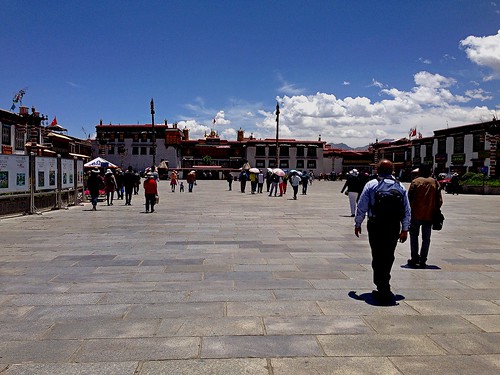

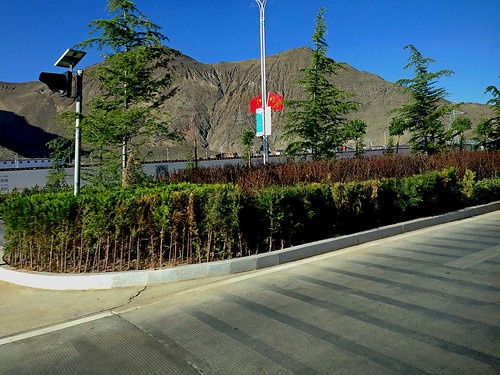



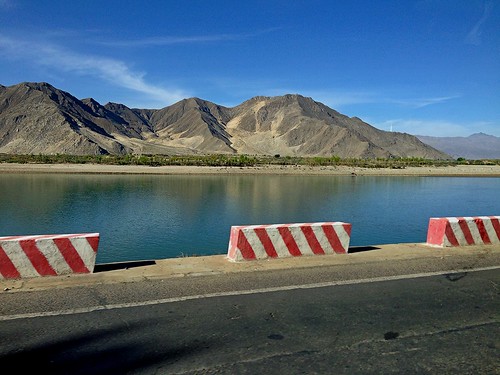
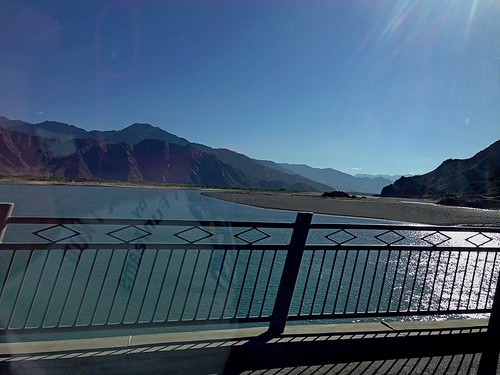
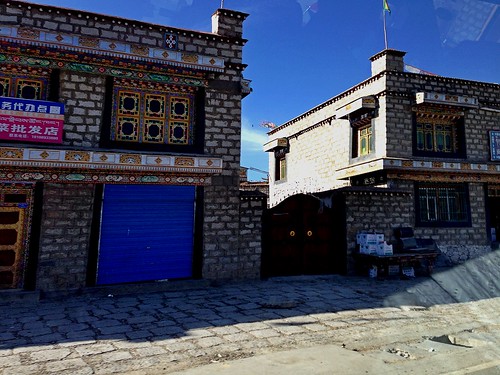
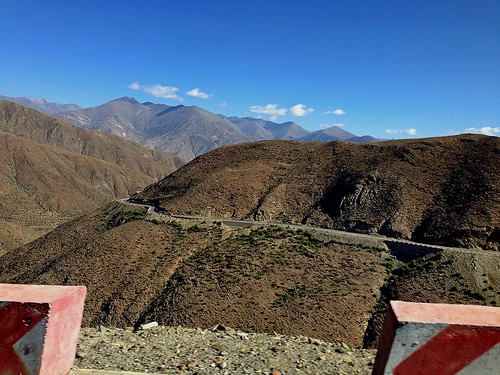
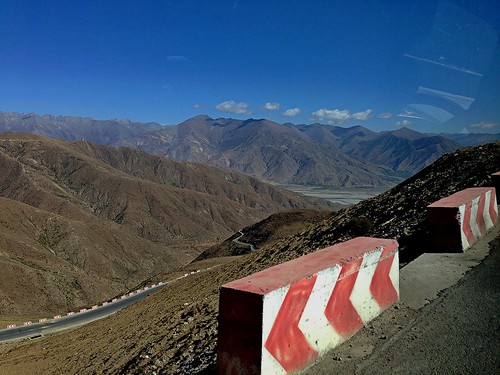
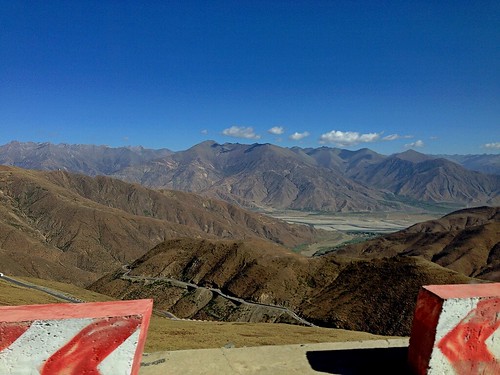

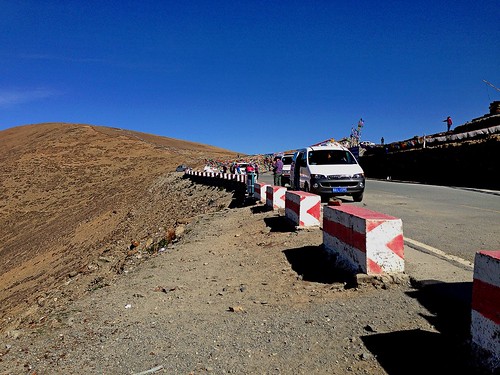
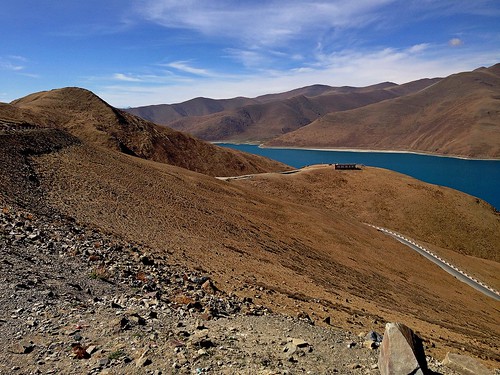
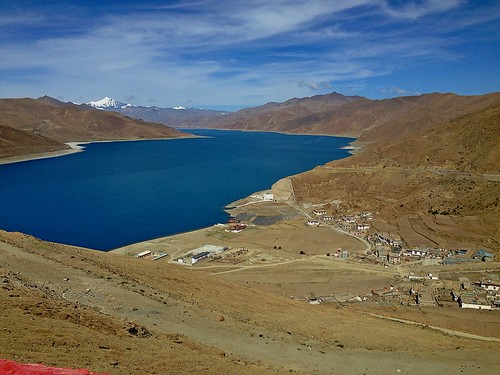
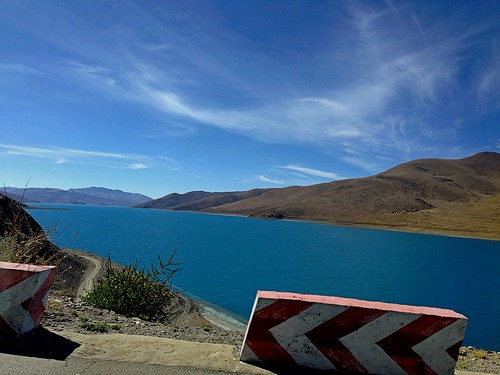
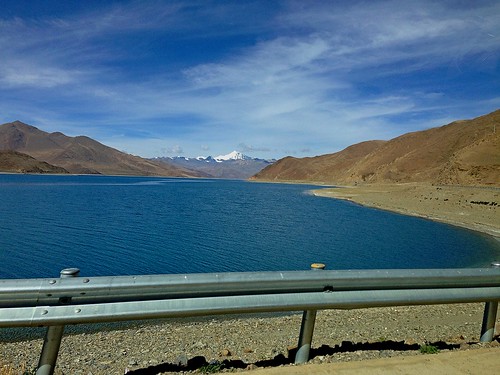
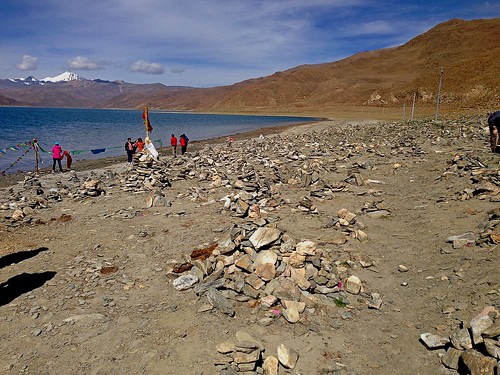

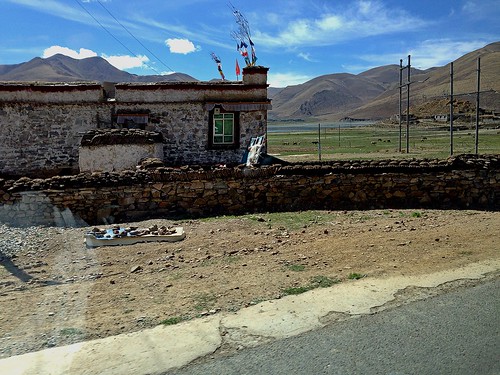
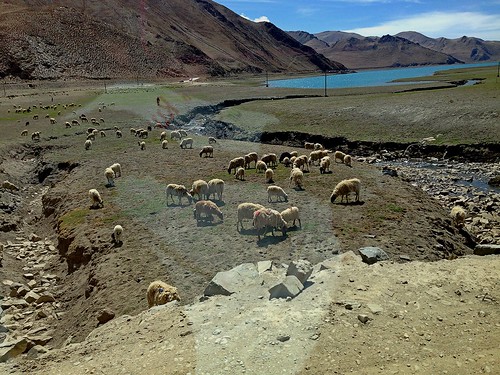

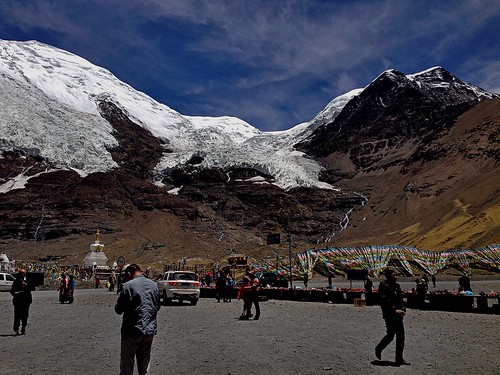
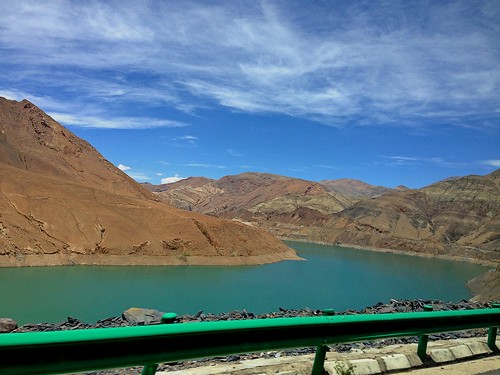
No comments:
Post a Comment